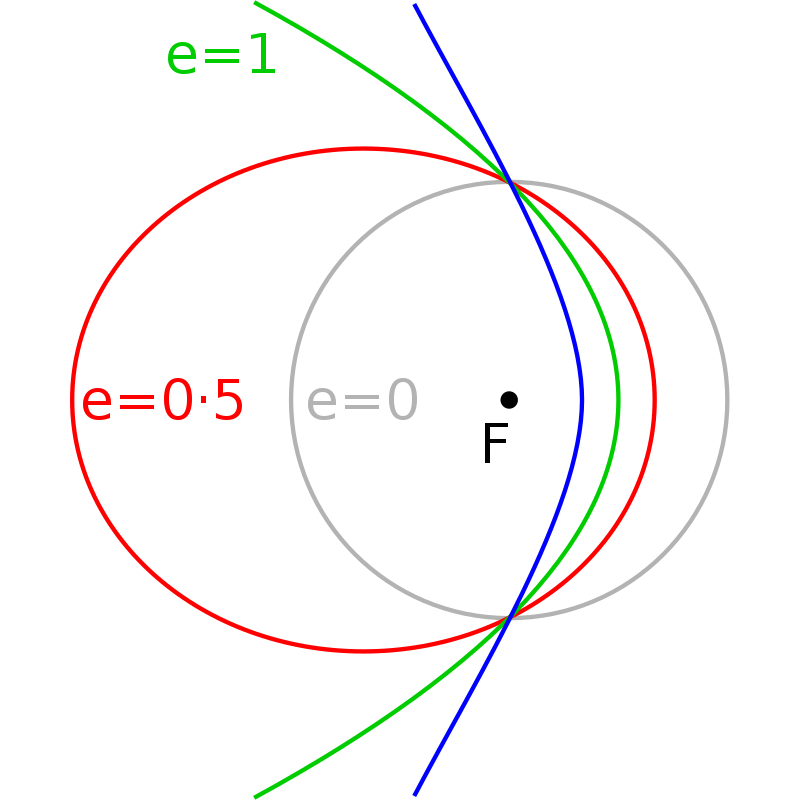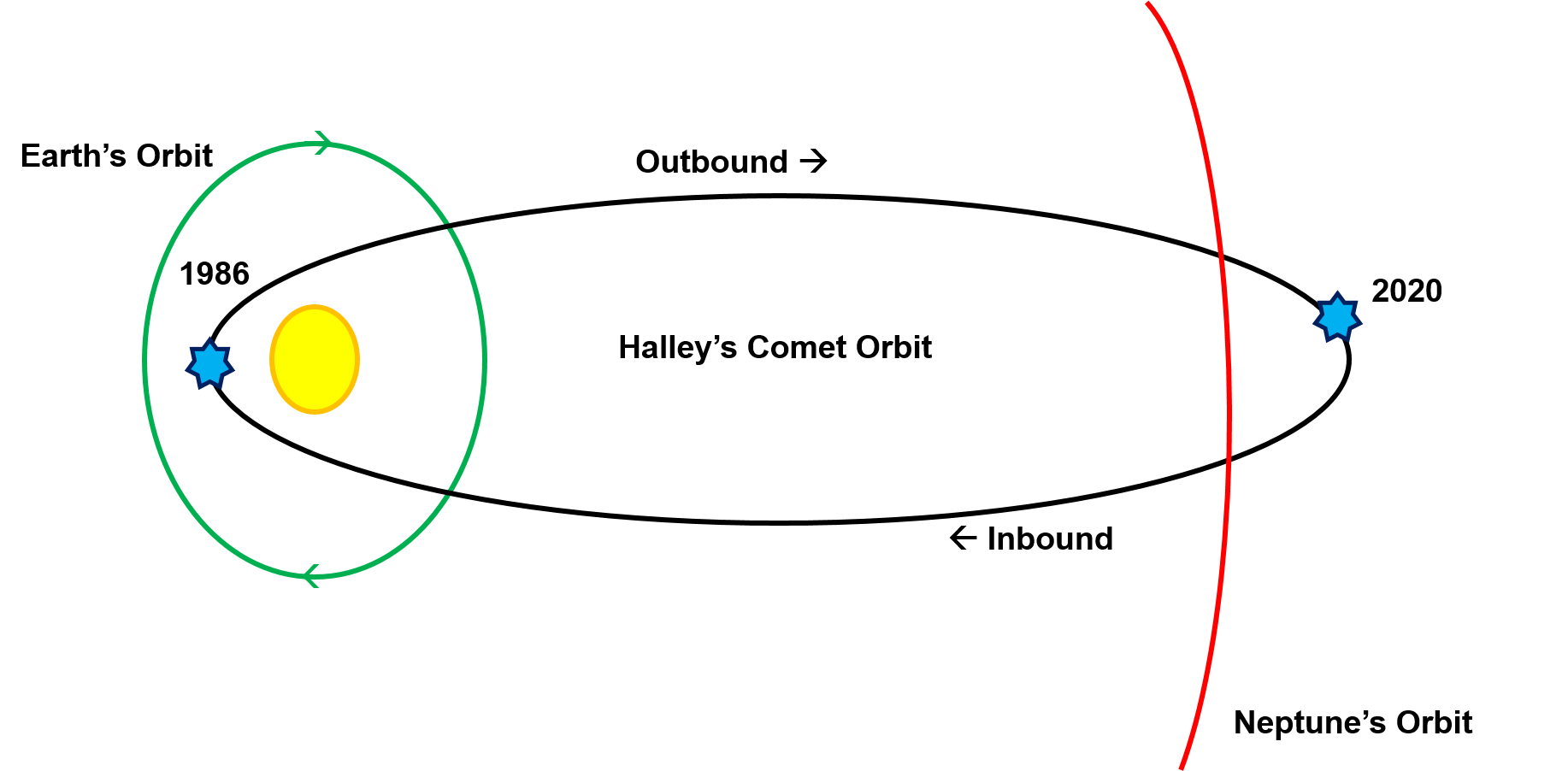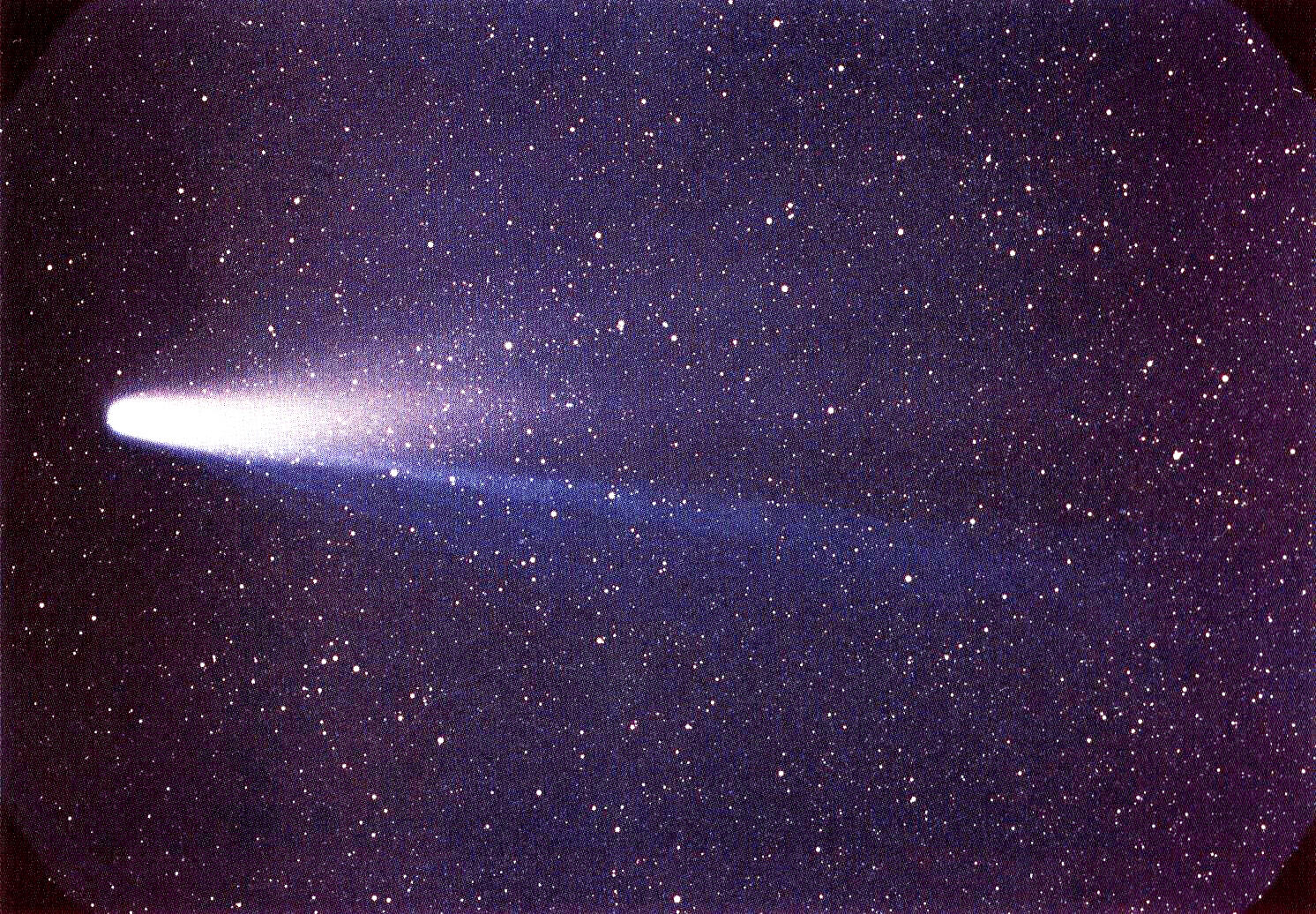We need to talk about Halley’s “eccentric” behaviour.
Why does it turn up once every 76 years on average?
Let me explain with the help of a rubber band.
Let us imagine a brand new rubber band on a table. It is a perfect circle. In Mathematics, we can also describe it as a curved outline with an ‘eccentricity’ of zero or e=0.

Examples of orbital trajectories with various eccentricities. (Image credit: Hermitage17 / Public domain)
To put it simply, a circle has an eccentricity of zero. If you stretch the rubber band sideways – so that it looks like an oval – the rubber band is no longer a circle, and its eccentricity increases. Loosely speaking, we can call this an ellipse.
An example is the Earth’s orbit around the Sun. It is almost a circle, but not quite, and its eccentricity is 0.0167.

The orbit of Halley’s Comet.
Halley’s Comet’s orbit, on the other hand, is a classic example of an elliptical orbit. Its eccentricity is 0.967. You can see that Halley’s Comet is fairly well travelled – it goes beyond the orbit of Neptune! Neptune is really very far away from Earth, and that is also one of the reasons why we only get to see the comet from Earth once every 76 years on average. Tsk!
On the up side, it comes back – unlike comets on a parabolic or hyperbolic orbit. Say you stretch the rubber band to it limits and it snaps. Depending on how it snaps, you get a parabola or hyperbola, which are more “eccentric” than the ellipse.
A comet that travels along a parabolic or hyperbolic orbit, such as the Great Comet of 1831, will never return once it passes by Earth. They pay us a visit and then disappear never to be seen again.
So, I guess we should cut Halley’s Comet some slack. It is not that “eccentric” after all, and we can look forward to seeing it again in mid-2061.






